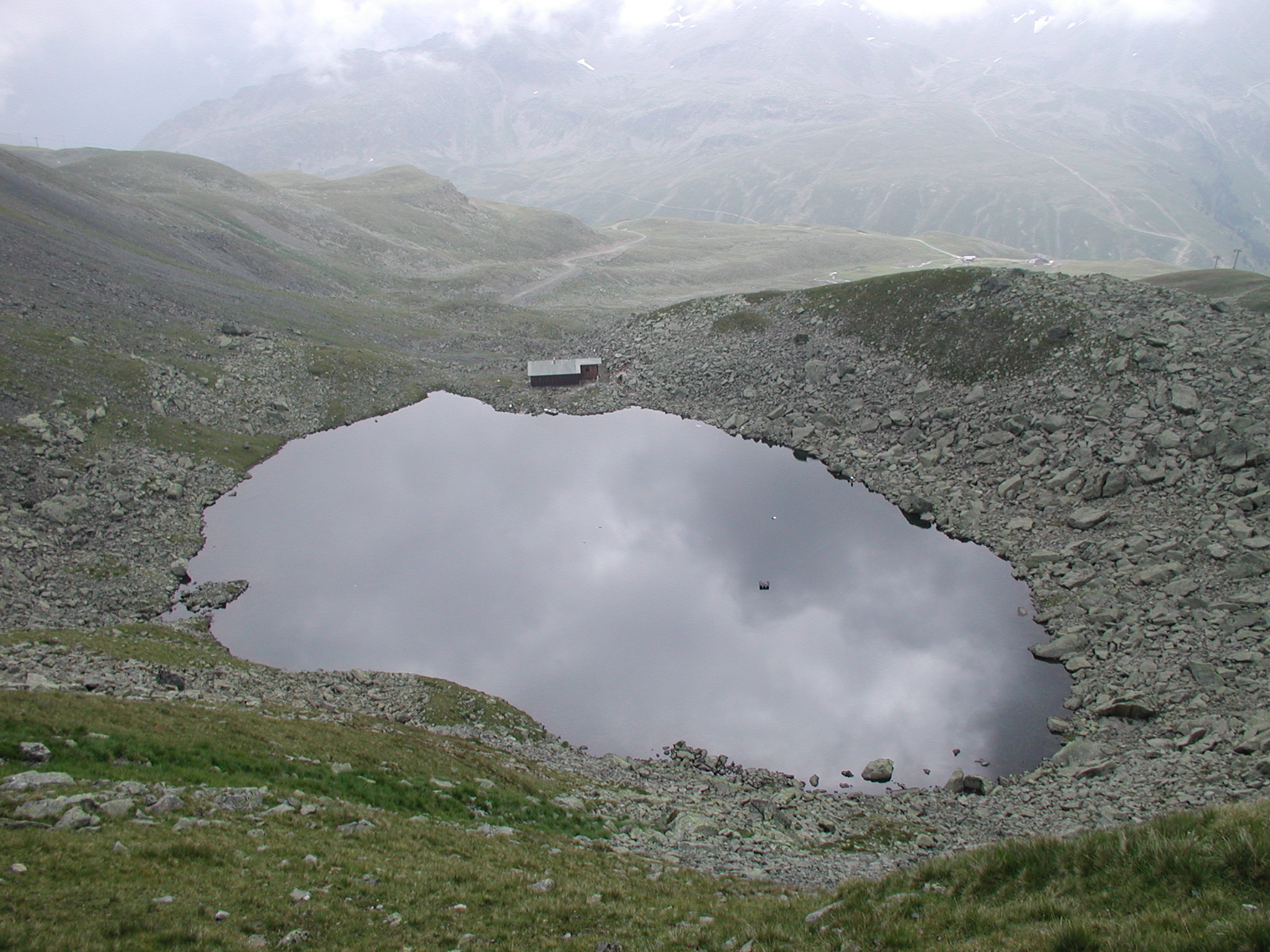Operator: University of Innsbruck, Institute of Ecology
DEIMS-SDR Database: Gossenköllesee
Contact: Birgit Sattler and Ruben Sommaruga
Lake Gossenköllesee is located in the Stubaier Alps at an elevation range of 2,417 m (lake level) to 2,828 m a.s.l. (Pirchkogel) at 47° 14´N and 11° 01´E, and has an area of 1.5 ha. During the ice age the whole area was glaciated. After the retreat of the ice at the beginning of the Holocene period, several lakes were formed, four of which still exist with the largest being Gossenköllesee. An already existing limnological research station, established in 1959 at the shore of a large alpine lake (Vorderer Finstertaler See), was flooded during the construction of a dam. Both lakes, Vorderer and Hinterer Finstertaler See, were converted into a reservoir for hydroelectric power generation in 1974. So a new station was built in 1975 on the opposite slope of the Kühtai Valley, called Limnological Station Gossenköllesee, which was completely redesigned and enlarged in 1995. In 1977 the UNESCO Biosphere Reserve Gossenköllesee was established and denied in 2014.

Gossenköllesee is characteristic for high alpine regions and a largely intact, natural environment. The focus of scientific interest in the BR Gossenköllesee is the long-term alteration of alpine lakes, streams and entire catchments. After 25 years, this is still an attractive and highly relevant subject for both ecological research and environmental protection. Gossenköllesee has been a core site in different EU projects since 1992 (ALPE, MOLAR, EMERGE) and it is included in the EUROLIMPACS Integrated Project and the ALTER-NET Network of Excellence (6th Framework Program). For three decades, atmospheric deposition, lakes, streams, soils and vegetation of the biosphere reserve have been the subjects of MA and PhD theses and international projects. From 2004 onwards, the BR Gossenköllesee, as a unique center for scientific education, became a core site for the research focus of the University of Innsbruck (Alpiner Raum – Alpine Space).
The importance of the station for research and teaching is illustrated by a few facts: